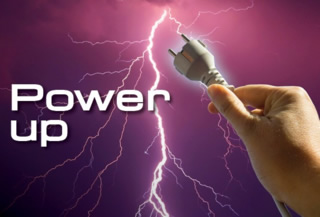Power Up
 |
On any given Sunday, your flat-screen TV shows the game in high definition, your refrigerator serves up ice-cold beverages, and your microwave pumps out an endless stream of hot snacks.
All seems right with the world, but maybe not. As your number of in-home modern appliances and electronics continues to mount, they could be struggling under a weak system: worn-out electrical that is no longer safe or meeting your home's needs.
Electrical failure or malfunction accounted for 13 percent of all home fires in 2011, according to the National Fire Protection Association. The older your house, the greater the likelihood that your wiring is failing, out of code, or simply unsafe.
 |
|
|
 |
|
|
 |
|
|
This is certainly the case for Eichlers and other mid-century modern homes, which have electrical systems that are well over half a century old.
"What I see mostly is service upgrades, because the system has been there for 50-plus years," says electrician Tom Needham, owner of Needham Electric & Construction in San Mateo. "They are all beginning to fail or break."
Typically, Needham receives a general service call to troubleshoot a small problem. Homeowners complain about flickering lights, sparking outlets, fuses that blow or breakers that trip repeatedly, and two-pronged, ungrounded outlets that don't provide adequate safety for modern appliances. All of these are indicators of bigger issues.
The hub of your electrical system is the main panel, which is fed by large wires from the utility company. These wires are encased in steel conduit for safety.
Unlike more traditional homes, the Eichlers were not designed with convenient access areas (attics, basements, and crawlspaces) to stash infrastructure. As a result, its electrical system was channeled under the slab, across the roof for ceiling lights (imbedded in roofing materials), and behind the wall panels.
Moisture and limited power
Although old wiring isn't inherently dangerous, the systems wear out over time. Almost all the metal conduit from the original circuit boxes in Eichlers runs beneath the slab to various points around the house. As the old thin-walled tubing is exposed to years of moisture beneath the slab—from leaking pipes, roof drainage, or landscape irrigation—corrosion occurs, leading to failure and grounding issues.
Too little power is another issue. The original systems operated with 50- to as much as 100-amp electrical panels, which were the standard in the 1950s.
Circuit breakers, or fuses, in your main panel limit the power from the electrical company to a level that your wiring system can safely handle. The limited power is then funneled through circuits and wires to various parts of your house.
If you turn on too many appliances, electronics, or lights, and the power demand on any one circuit exceeds the limits of the circuit breaker, the breaker shuts down the circuit. When this happens, you know you have overloaded the circuit.




